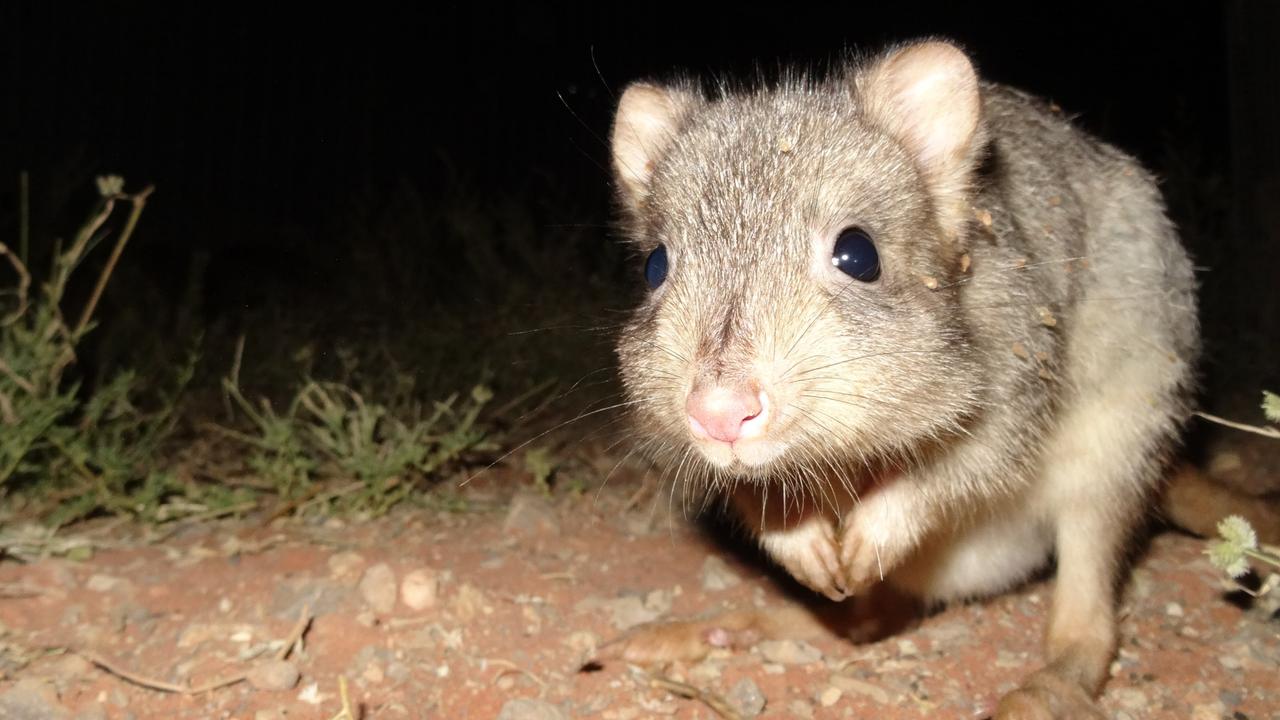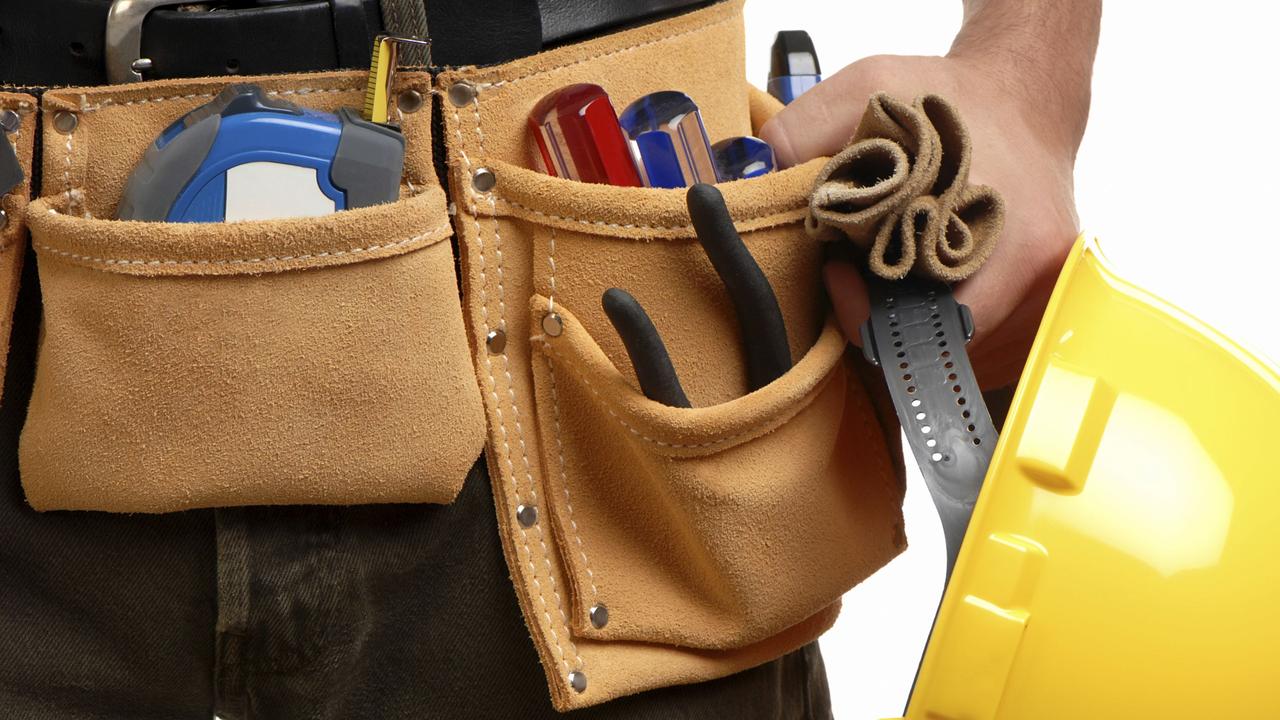Abby Sunderland says her heart skipped a beat at seeing her abandoned yacht Wild Eyes floating off Kangaroo Island
Almost nine years after ditching her yacht in rough seas during her solo around-the-world record attempt, Abby Sunderland’s heart “skipped a beat” when she saw her capsized yacht adrift off Kangaroo Island.
SA News
Don't miss out on the headlines from SA News. Followed categories will be added to My News.
As she sat aboard a French fishing vessel, American teenage sailor Abby Sunderland was coming to terms with never again seeing her yacht Wild Eyes.
Just hours earlier, on June 12, 2010, the 16-year-old had been rescued from a remote area of the Indian Ocean, about 3700km southwest of Perth, while trying to complete a solo around-the-world voyage.
She was forced to abandon her dismasted 12m yacht after it was smashed by huge waves in atrocious weather conditions.

More than 8 ½ years later, Ms Sunderland yesterday recalled how her heart skipped a beat when she saw her beloved vessel covered in sea barnacles and floating in waters off Kangaroo Island.
Wild Eyes was sighted by a tuna spotting plane about 20km south of Vivonne Bay about 12.30pm on December 31.
Ms Sunderland, now 25, said that seeing her yacht on the news had brought back memories of the two days she spent adrift in the Indian Ocean before she was rescued.
“Seeing Wild Eyes on the news was very emotional. My heart skipped a beat,” Ms Sunderland told The Advertiser. “It brought back many memories – good and not so good – but it was neat to see it after so long. It looked a little creepy but that’s to be expected after so long.”
The mother of three, who is expecting a fourth baby in March, said it would be great to retrieve her yacht but this may be cost prohibitive.
“I’d love to know what’s inside and if any of the video equipment is still there,” she said. “I always knew the boat was high quality and very safe so it doesn’t really surprise me that it’s still floating.”
Her father Laurence Sunderland told The Advertiser they were “exploring options” to come to Australia and reclaim the boat.
“It’s big news, a little unexpected. This will bring a bit of closure and nostalgia seeing the boat turned up,” he said. “We’ve all moved on and this (news) brought us back to that time when Abby’s life was spared.”
Mr Sunderland, a yacht business owner, said having the upturned boat appearing recognisable eight years later was “remarkable”.
“I expected it to turn up on a beach all smashed to smithereens in the Southern Ocean,” Mr Sunderland said.
“The battery would have died and there may be footage from a camera inside a sealed, waterproof case. If that’s still intact, it may be testimony for the (incident).”

CIRCUMNAVIGATION ATTEMPT
Ms Sunderland started her first solo circumnavigation attempt on January 23, 2010. She was aiming to better Australian Jessica Watson by becoming the youngest person to sail solo around the world, starting from her home state California.
She encountered technical difficulties just days into her journey and was forced to abandon the attempt in Mexico on February 2.
She launched her second attempt on February 6 but had to stop in Cape Town, South Africa, on May 5 for repairs to her autopilot system, ending her non-stop attempt.
However, she planned to continue the circumnavigation and was sailing in a remote area of the Indian Ocean when her dreams were ended.
Ms Sunderland’s yacht was smashed by strong winds and big waves causing her mast to snap and boat to roll on June 10.
She activated her emergency beacons and awaited help.

Rescue and criticism
The Australian Maritime Safety Authority sent a chartered Qantas plane with 11 State Emergency Service observers and a WA Fire and Emergency Services officer on-board to look for Ms Sunderland on June 11.
The crew spent about 12 hours looking for the missing sailor until she was found uninjured and in good health.
Ms Sunderland was rescued by a French fishing vessel on June 12 and taken to Kerguelen Islands and then on to Reunion Island, east of Madagascar.
It was while on-board French fishing vessel Ile de la Reunion that Ms Sunderland wrote in her blog about her sadness at never again getting to see her yacht.
“There are plenty of things people can think of to blame for my situation – my age, the time of year and many more. The truth is, I was in a storm and you don’t sail through the Indian Ocean without getting in at least one storm.,” she wrote.
“It wasn’t the time of year it was just a Southern Ocean storm. Storms are part of the deal when you set out to sail around the world. As for age, since when does age create gigantic waves and storms? “I am still trying to get over the fact that I will never see my Wild Eyes again.”
Ms Sunderland’s rescue by French and Australian authorities cost an estimated $300,000, sparking controversy at taxpayers footing the bill.
Her parents were criticised and accused of negligence for allowing their daughter to risk her life.
Ms Sunderland and her family defended the sailor’s seafaring skills before and after the ordeal.
In 2011, Mr Sunderland produced a documentary about the voyage, titled Wild Eyes: The Abby Sunderland Story.
Ms Sunderland also co-authored a book Unsinkable: A Young Woman’s Courageous Battle on the High Seas about her journey.

The yacht
Wild Eyes will remain floating in the Great Australian Bight, where it does not currently pose a hazard to recreational vessels, although a navigation warning has been issued to mariners.
A Transport Department spokeswoman said it had salvaged two vessels from SA waters in the past five years.
“The salvage of the yacht will only be attempted if it creates a hazard to other vessels. If the yacht comes ashore, the department will issue a notice of removal of the wreck,” the Transport Department spokeswoman said.
“It is unknown how much debris and abandoned vessels are drifting off the coast of SA.”
CSIRO scientist and ocean drift expert Dr David Griffin said it was likely the Wild Eyes had completed its around-the-world journey by itself.
“There is every chance it has done a lap of the world already and is on its second time around,” Dr Griffin said.
“Eight or nine years is far too slow for a direct trip. The simulated particles used in our search for MH-370, which sounds like it is in a similar kind of place, have done a lap already.”
Dr Griffin said the fate of Wild Eyes would depend on the weather and how far the yacht was from the shoreline.
“For the summer it will probably bob around roughly where it is,” Dr Griffin said.
“But when winter hits and it gets cold it could come ashore in Victoria or Tasmania or even shoot through Bass Strait and keep going.”
Under international maritime law principles, Wild Eyes is considered a derelict vessel if its crew and owner had no intention of attempting to retrieve it.
If classified as a derelict vessel, the yacht is up for grabs from anyone with the resources to salvage it.


